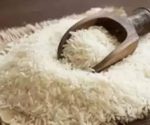For Hyderabad metro riders, toilet breaks can prove costly | Hyderabad News

Hyderabad: Going to the toilet during a long commute is fraught with inconvenience for lakhs of metro passengers in the city.
“On long metro rides, commuters have to plan their restroom breaks like a military mission,” says T Rishi, who crosses 13 stations on his way to work.
Take for instance a passenger travelling from Miyapur to LB Nagar. The travel time is about an hour, with 27 stops along the way. However, there are only two stops in between where toilets are accessible within the paid area — Ameerpet and MG Bus Station. If a passenger misses these stops, they will have to go outside of the paid area, which entails having to seek permission of the staff in order to use the toilet and re-enter the paid area without paying extra.
Unlike metro systems in Mumbai and Bengaluru, Hyderabad Metro Rail stations typically position restrooms outside the paid areas, which passengers say is a design flaw. While HMR permits free re-entry for restroom use, passengers have to inform the staff beforehand. However, awareness about this remains low.
Acknowledging the issue, an HMR official said, “We have put up signage boards, so passengers just need to inform the staff at the gate before stepping out and reporting back to them. But most are unaware of this and pay extra.”
Women passengers find it discomfiting to ‘ask permission’ from the staff to use the toilet. “The toilets are usually located in isolated corners. Having to alight from the train and inform a male staff member just to use the toilet feels uncomfortable, especially in the night,” says Zainab, a student.
Anil Reddy, a regular metro commuter, finds the whole thing too complicated. “On my way from JNTU to Panjagutta, I had to alight at Moosapet to use the toilet. I had to go up to the staff, inform them, walk all the way to the toilet, return, and then wait for the next train on which I would have to again hustle for a seat. Why should one jump through so many hoops just to use the toilet?”
“I was told I could exit and re-enter, but I was still charged 5 for using the washroom. Why should I pay extra when I’ve already bought a metro ticket?” asks B Haritha.
The amount of time involved in taking a toilet break has led to many passengers limiting their water intake ahead of long metro rides. Not only do I let go of my seat, I also have to wait for five minutes for the next train which is usually even more crowded. So I tend to drink very little water before my metro ride. I’m not sure how safe that is, but I am in a rush in the morning to go to work and cannot afford such a long toilet break.”
Dr Neha Ismail Ajani, a physician, warned about the risks of dehydration among regular metro commuters, “We often see cases where commuters are dehydrated, especially during the summer. This leads to long-term issues like kidney stones. For women, this can translate into serious risks.”
















